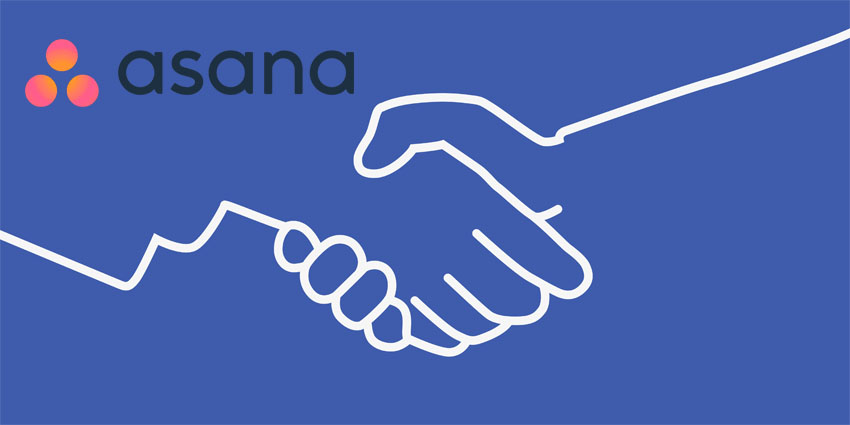Asana has appointed former RingCentral CFO Sonalee Parekh as its own new Chief Financial Officer.
Announced as part of Asana’s latest earnings call, which reported modest but stable growth, Parekh is replacing the outgoing CFO Tim Wan, who has served in the role since 2017. Parekh will take up the role effective September 11, 2024, with Wan remaining in an advisory position.
Asana says that Parekh will lead its global finance organisation and play a crucial role in overseeing the company’s next phase of growth and innovation.
Parekh commented:
Asana is uniquely positioned to capitalise on the opportunity to leverage AI in the work management category to drive productivity and efficiency benefits for workers across the globe. I’m excited to partner with Dustin and Asana’s seasoned management team in driving Asana’s next phase of growth.”
Parekh joins with over 25 years of experience and expertise from her previous executive finance roles at prominent public companies. In addition to serving as CFO at RingCentral, she was Divisional CFO, Head of Corporate Development, and Investor Relations at Hewlett Packard Enterprise.
During her tenure as CFO at RingCentral, Parekh is credited with successfully navigating the company through a period of rapid growth. She doubled operating profit while maintaining double-digit revenue growth and surpassing $2 billion in annual recurring revenue (ARR). Additionally, she played a critical role in the company’s successful expansion into a multi-product portfolio.
“Sonalee’s public company experience and market perspective, coupled with her proven track record of driving growth and profitability at scale, makes her the ideal person to partner with me and the leadership team as we execute on the large opportunity ahead of us,” added Dustin Moskovitz, Asana’s co-founder and CEO.
“She’s had a front-row seat to some of the most transformative technology trends, and we’re in the midst of another pivotal moment. AI has the enormous potential to reshape not only the work management category but the entire software industry. Sonalee’s experience overseeing and fostering efficient growth during critical inflexion points will be invaluable to Asana.”
RingCentral says it has “initiated a search to identify a successor that will include both internal and external candidates” and that Parekh’s departure is not because of “any disagreement with the Company or the Board regarding its financial results, accounting principles, practices, or financial statement disclosures”.
Asana’s Operational Highlights This Quarter
Asana continues to double down on AI, as it did last quarter, citing business successes with its new AI Teammates solution and keen early adoption for its AI Studio Beta program. Moskovitz noted interest in this program from “industry leaders across various sectors, including media, technology, financial services, manufacturing, healthcare, professional services, and consumer goods”.
Moskovitz also highlighted that because there is still scepticism about AI and its value in the enterprise, AI Studio enables organisations to trial the extent to which they want to deploy it across their ecosystems.
Moskovitz was cautiously optimistic about Asana’s long-term growth, citing record multiyear deals and expanding partnerships with leading companies, particularly in AI. Asana COO Anne Raimondi highlighted that two leading AI labs expanded their use of Asana across departments and upgraded to Enterprise Plus for enhanced security. Asana’s adoption has accelerated collaboration in marketing, sales, engineering, and more, helping them release products faster and work more efficiently.
The CEO also highlighted Asana’s scalability and enhanced enterprise offerings, including new AI features like request tracking and work intake, resource management, and advanced reporting. Moskovitz stressed these improvements aim to accelerate value for large organisations. Additionally, unlimited view-only licenses are expected to drive paid seat growth, reinforcing Asana’s expansion strategy within its existing customer base.
However, the persistent macroeconomic headwinds and underperformance in the technology sector hinder overall growth. Raimondi outlined that several major deals were pushed out but remain in Asana’s pipeline, which impacted sales this quarter. Despite these challenges, Moskovitz sees stabilisation in the business and notes growth in key verticals such as retail, consumer goods, and media.
Asana’s Quarter In Financial Health
Asana’s Q2 2025 earnings report highlights revenue growth of 10 percent year-over-year, reaching $179.2 million. Former CFO Wan noted the company now has 22,948 core customers, whose spending grew 11 percent, accounting for 75 percent of total revenue. High-spending customers ($100,000+ annually) rose by 17 percent, with a strong 103 percent retention rate.
Despite these positive trends, Asana reported a non-GAAP operating loss of $15.7 million and a net loss of $11.1 million.
Gross margins remained strong at 89 percent, with Wan highlighting significant investment in research, development, and sales. Free cash flow was $12.8 million, but the company expects this to drop seasonally in Q3. Asana’s remaining performance obligations grew 18 percent, driven by multiyear deals.
Looking forward, Asana projects moderate revenue growth, expecting FY2025 revenues of $719-721 million and a net loss per share of $0.19-$0.20. The company remains cautious due to ongoing macroeconomic challenges, with headwinds around its technology vertical still present and impacting sales cycles. Still, Wan sees signs of stabilisation and aims for positive free cash flow by year-end.







